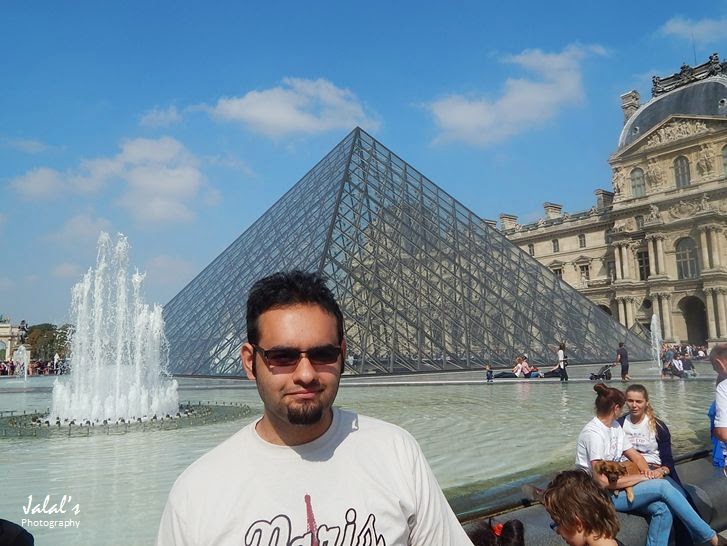The Louvre Museum is housed in the erstwhile 12th century Louvre Palace - a magnificent form of architecture with engravings so compelling that for a moment one forgets about Mona Lisa and is absorbed in watching and appreciating those who crafted this palace. Even otherwise, the queue to the entrance is so long that one has all the time to look around and take photos of the palace's facade.
This group of tourists took to dancing to take off the tiredness from their legs after standing in the queue for a long time as we and every did
The queue continues as we move forward
The entrance to the museum changed with the construction of the huge glass pyramid that now stands above the new entrance in the main court, the Cour Napoléon. The pyramid was completed in 1989. The second phase of the Grand Louvre plan, La Pyramide Inversée (The Inverted Pyramid), was completed in 1993.
The glass pyramid has a height of about 22 meters (72 ft) and at its base measures just over 35 meters (116 ft). It is flanked by three smaller pyramids and reflecting pools with modern fountains. It is the entrance to the subterranean level to the Hall Napoléon - with access to the three different wings of the museum.
One of the smaller pyramid adjacent to the main pyramid visible in the photo above right behind me!!
Standing for long hours in the queue is really tiring - it took us some two hours before we finally walked into the glass pyramid. The breeze takes the water of the fountain to everywhere and provides a much refreshing feeling to the tourists standing in the queue. Some, including us, took time out of the queue to sit for a while on the edge of the pond and enjoy the cool breeze before joining back the queue once again.
A tired me - but my wife still smiles
Close to the Louvre Palace turned museum, is the the Arc de Triomphe du Carrousel. The Arc was built between 1806 and 1808 to commemorate the victory of Emperor Napoleon at the Battle of Austerlitz in 1805. It once stood between the Louvre and the Palais de Tuileries and served as the entrance to the Tuileries Palace. The palace was burnt during the Commune de Paris in 1871 and its ruins were later demolished. The visitors standing in the queue have clear view of the Place de la Concorde - and allows them to take photos, as we did too.
Originally a statue of Napoleon was proposed to be put in the chariot but Napoleon rejected the idea and the chariot remained without a rider until its restoration of 1828 when an allegorical figure took the place of the emperor. It is flanked by statues symbolizing Victory and Peace.
On top of the Arc du Carrousel were once four gilded bronze horses, which Napoleon had seized from St. Mark's Square in Venice. The statues were returned after Napoleon's downfall at Waterloo. Later in 1828 a bronze quadriga pulled by replica versions of the horses - created by François Joseph Bosio - was installed as a replacement.
The of 14.5 m high, 20 m wide and 9 m deep Arc de Triomphe du Carrousel is said to be the replica of the Arch of Septimus Severe in Rome. It now acts as a symbolic entrance gate to the Tuileries Gardens, built on the ruins of the Tuileries Palace.
The beautiful tone work on the exterior of the Louvre palace turned museum
Still waiting in the queue
And the queue to the entrance is still very long
This brings us still in the queue waiting for the entrance to the glass pyramid to come close and take us inside the museum. Mona Lisa is still far away - as far as my my next post!!
If you like Jaho Jalal, please follow us on Facebook















































0 comments:
Post a Comment